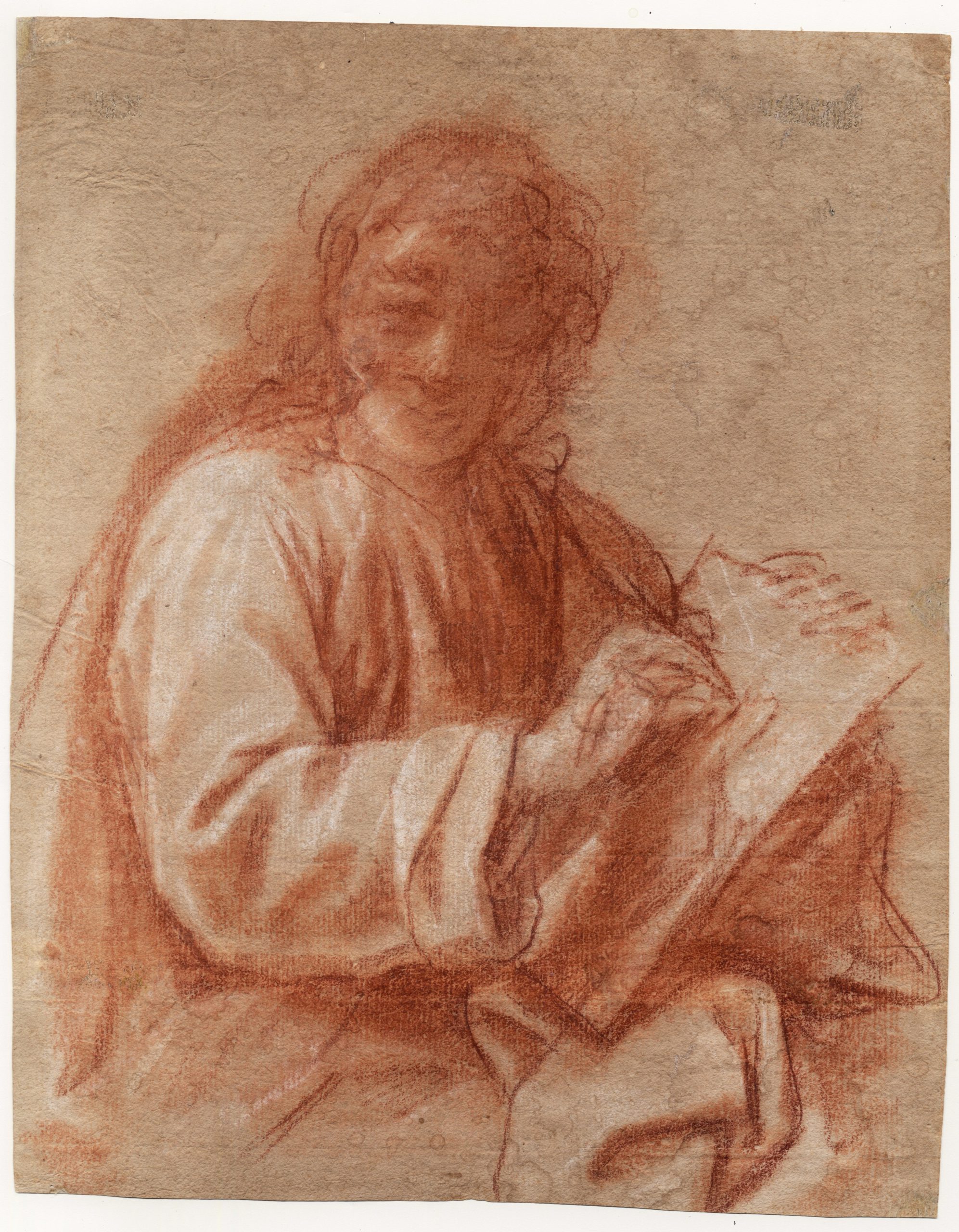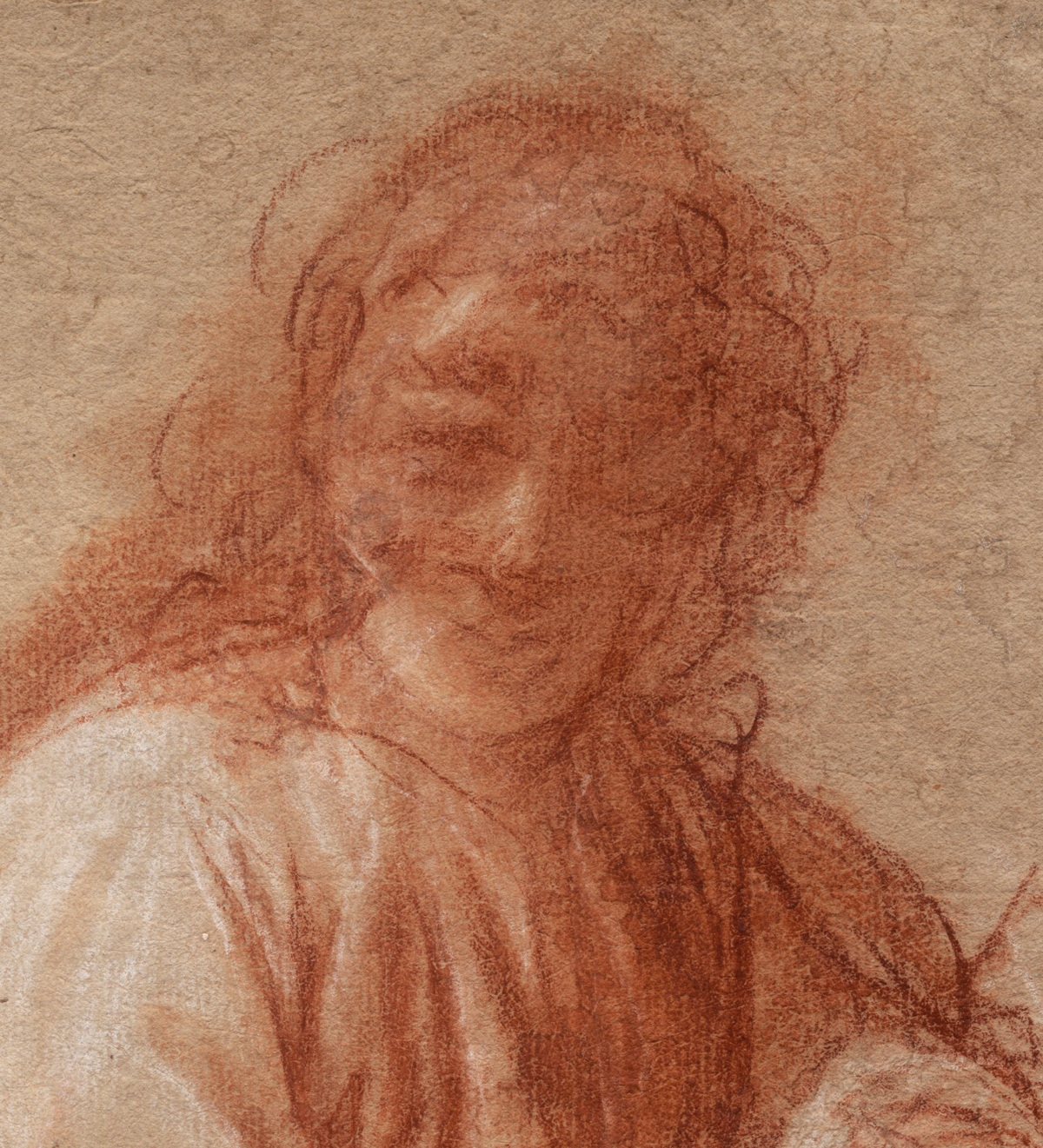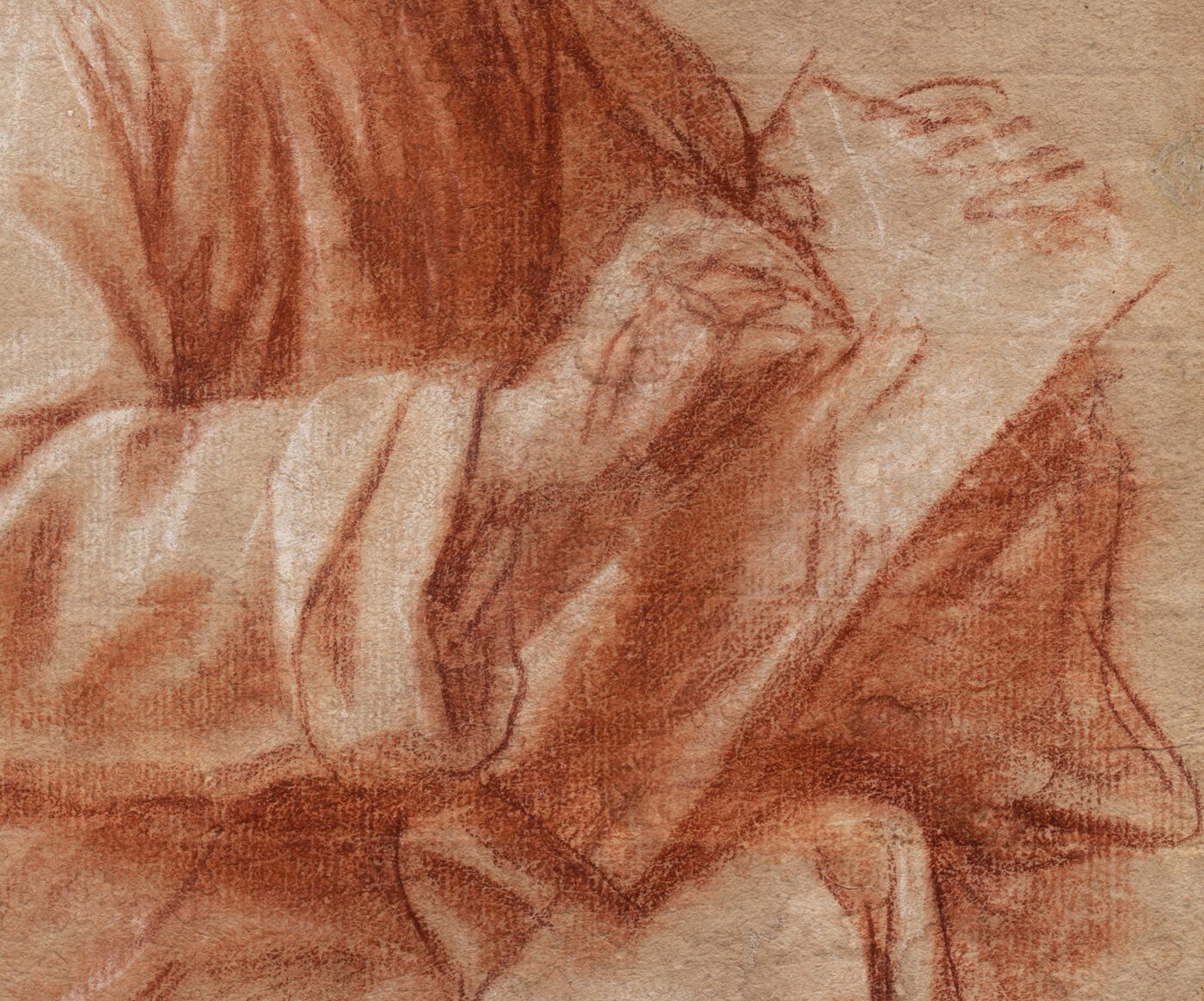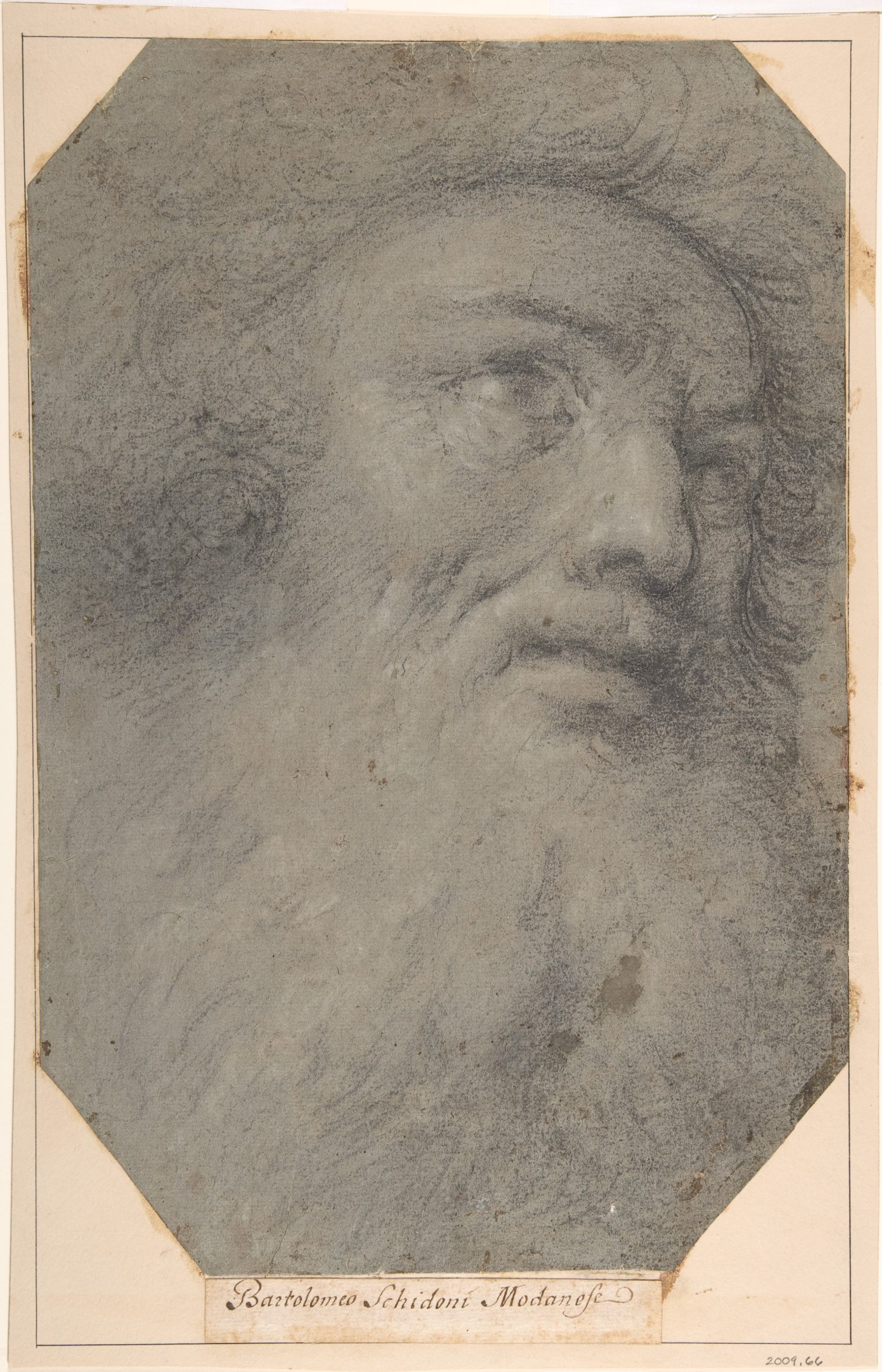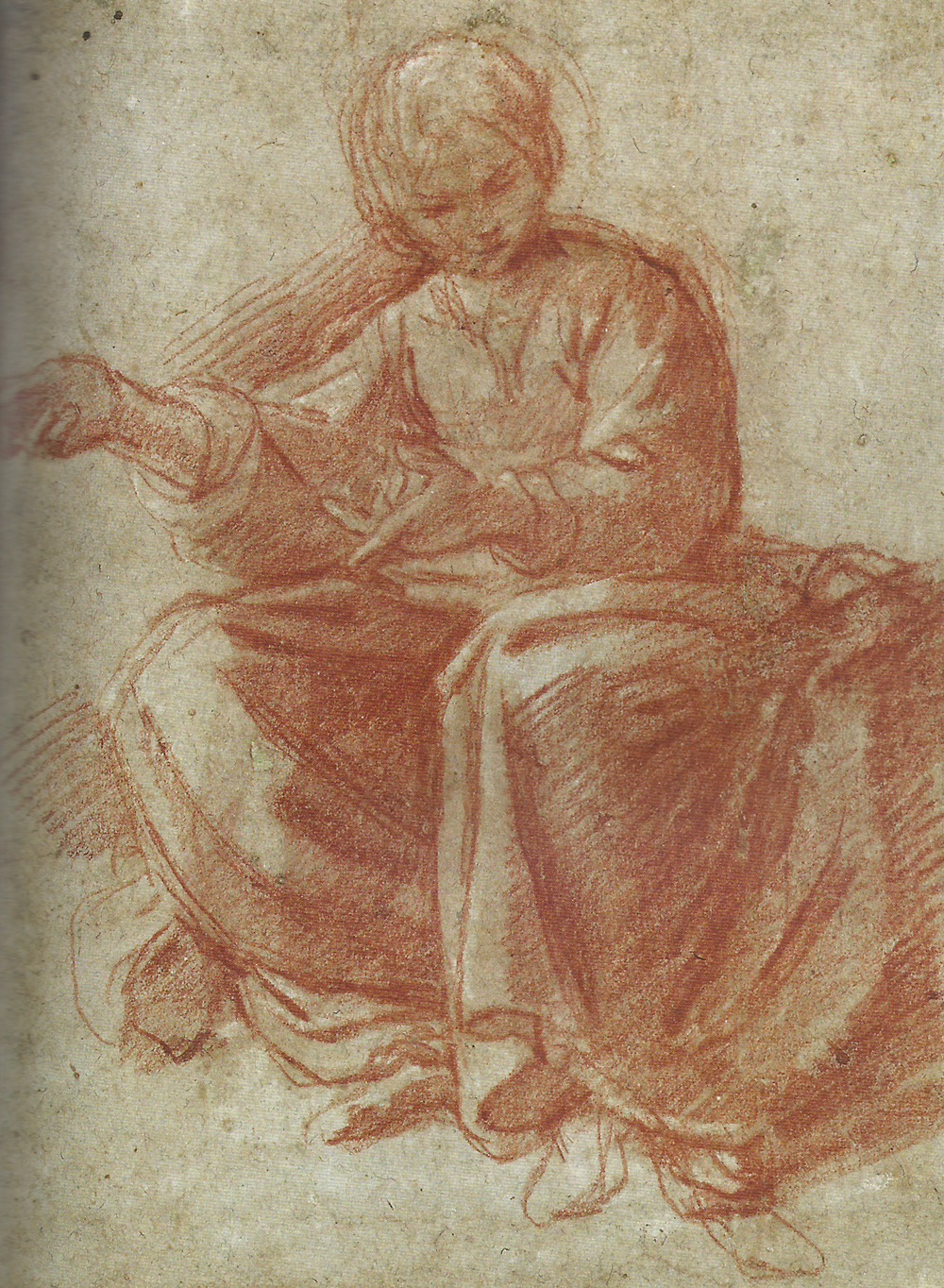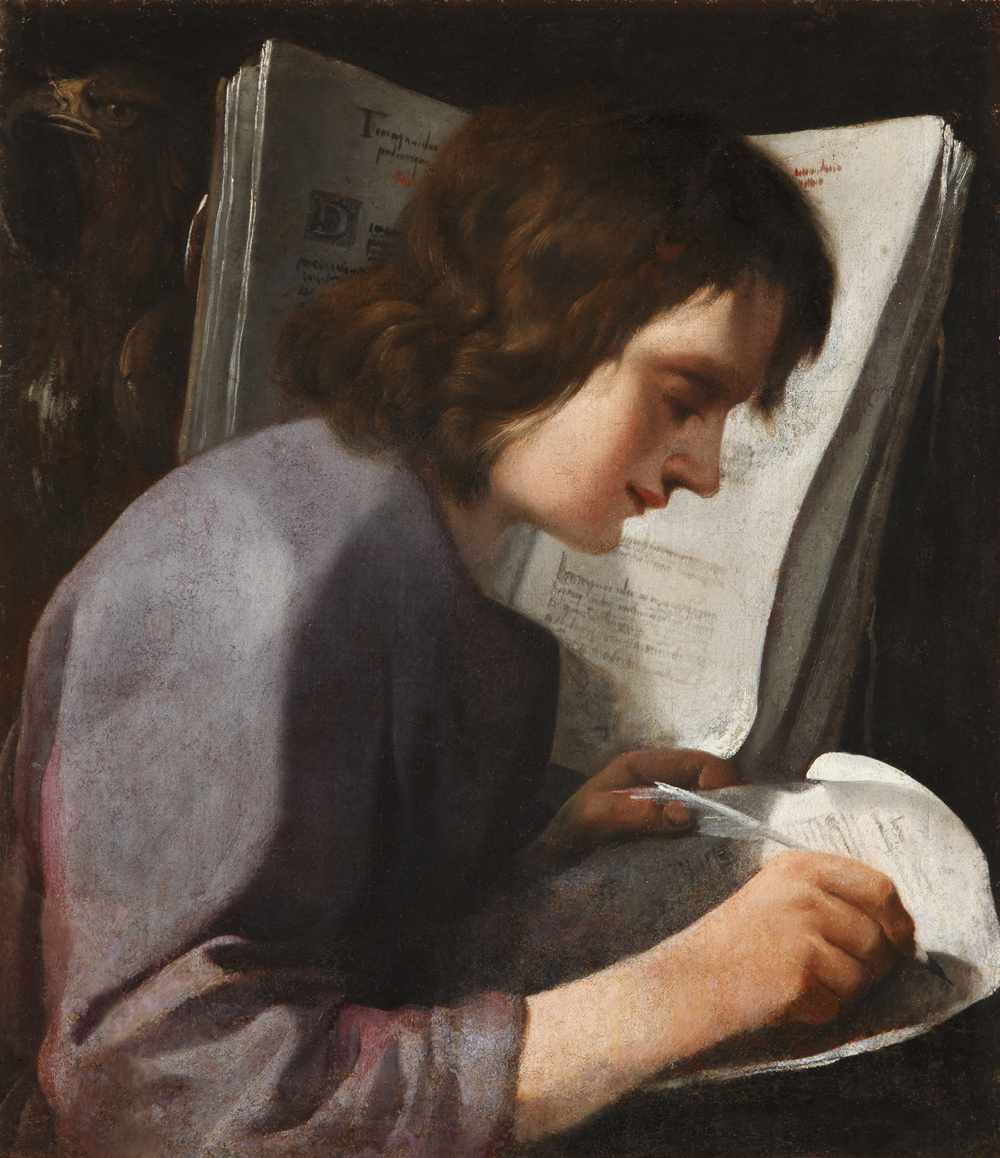Attributed to BARTOLOMEO SCHEDONI (Formigine, near Modena 1578 – 1615 Parma)
Attributed to Bartolomeo Schedoni (Formigine, near Modena 1578 – 1615 Parma)
Study of the Evangelist St John
Red chalk, heightened with white chalk, on buff paper, 279 x 219 mm (11 x 8.6 inch)
Provenance
~ Alfredo Petrucci (1888–1969), Rome
~ Private collection, Paris
***
The son of a mask maker for the Farnese and Este courts, Schedoni’s precocity as an artist was recognised by Ranuccio I, Duke of Parma, who sent him to Rome to train under Federico Zuccaro.1 In the Farnese archives a letter survives from Zuccaro to the Duke dated 1595, informing him that his student was to return to Parma for convalescence due to “una malatia che accenna lunghezza.”2 Schedoni's early work shows little of his Roman master’s influence, instead he appears to have drawn his inspiration from within Emilia, most notably from studying the work of Correggio and later of Lodovico Carracci in Parma.
Following his banishment for an altercation with Aurelio Foghetti in 1600, Schedoni was employed by the Court of Cesare d'Este in Modena where he worked for seven years. In December 1607, however, the artist returned to favor and was accepted once more by the Court of Rannuccio I as the Duke's favorite painter. By 1611 Schedoni's work was so highly esteemed that the Duke decreed no painting by his hand should be allowed to leave the city. It seems for the rest of his career Schedoni rarely left his native province, though limitless access to the Farnese and d’Este collections ensured he was mindful of the advances of artists beyond Emilia and his work remained innovative until his death in 1615.
Drawings by Schedoni are rare. Federica Dallasta and Cristina Cecchinelli only list a dozen or so in their monograph on the artist of 1999.3 The soft sfumato use of chalks is typical for the artist, as is the use of rather rough buff paper. A comparable drawing of the Head of a Bearded Man Looking Up is preserved in the Metropolitan Museum, New York (fig.).4 The sculptural quality of the drapery in our figure can furthermore be compared to Schedoni’s Draped Figure sold at Christie’s in 1998 (fig.).5
This attractive sheet is a perfect illustration of artistic thought in progress: the artist has drawn two versions of the head of the Evangelist, one looking up, and one looking down, with the mouth of the ‘upward’ head transformed into the eye of the ‘downward’ face. A painted version of the composition is not known, although the pose is similar to that of the painting of the Evangelist St John by Schedoni in the Cobbe Collection, England (fig.).6 Two full-length paintings of the Evangelists St Peter and St Paul are preserved in the Museo di Capodimonte, Naples.7
1. For the artist, see: Federica Dallasta and Cristina Cecchinelli, Bartolomeo Schedoni: pittore emiliano, Parma 1999 and Emilio Negro and Nicosetta Roio, Bartolomeo Schedoni 1578–1615, Modena 2000.
2. “An illness that may be long”, D. Miller, “A Roman Sojourn of Bartolomeo Schedone and other documents relative to the early phase of his Career,” Burlington Magazine, no. 847, vol. 115, London 1973, p. 650.
3. Dallasta and Cecchinelli, op. cit., pp. 199-202.
4. Black and white chalk, on blue paper, 463 x 240 mm; inv. no. 2009.66; acquired from Sotheby’s, New York, 28 January 2009, lot 83, repr. (after sale).
5. Red and white chalk on buff paper, 229 x 178 mm; private collection Dr William and Louise Fielder, Atherton, California; Christie’s, London, 7 July 1998, lot 113, repr.; Dallasta and Cecchinelli, op. cit., cat. no. D5.
6. Oil on canvas, 59 x 52 cm; The Public Catalogue Foundation. Oil Paintings in National Trust Properties. National Trust V: South, London 2013, p. 276, repr.
7. Oil on canvas, 132 x 92 cm (St Peter) and 130 x 92 cm (St Paul); Silvia Cassani (ed.), La Collezione Farnese, La Scuola emiliana: i dipinti. I disegni, Naples 1994, pp. 243-45, repr.
